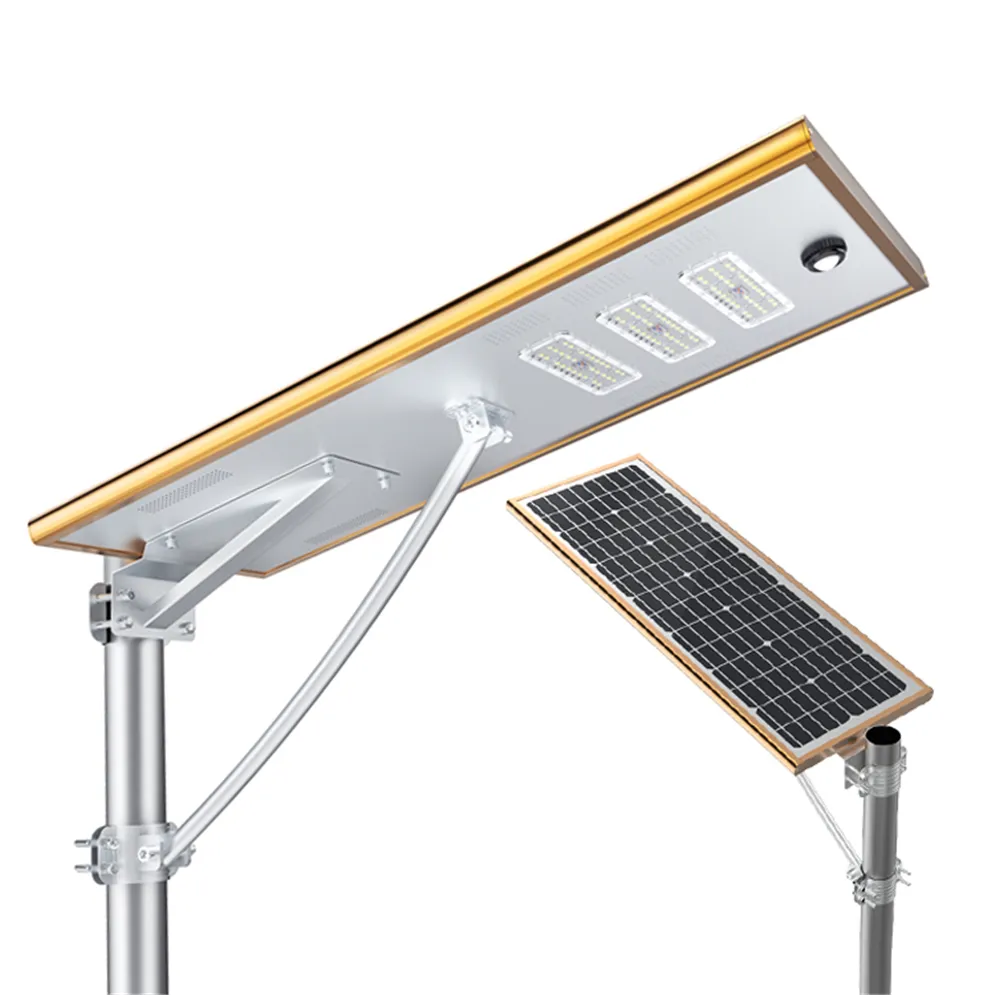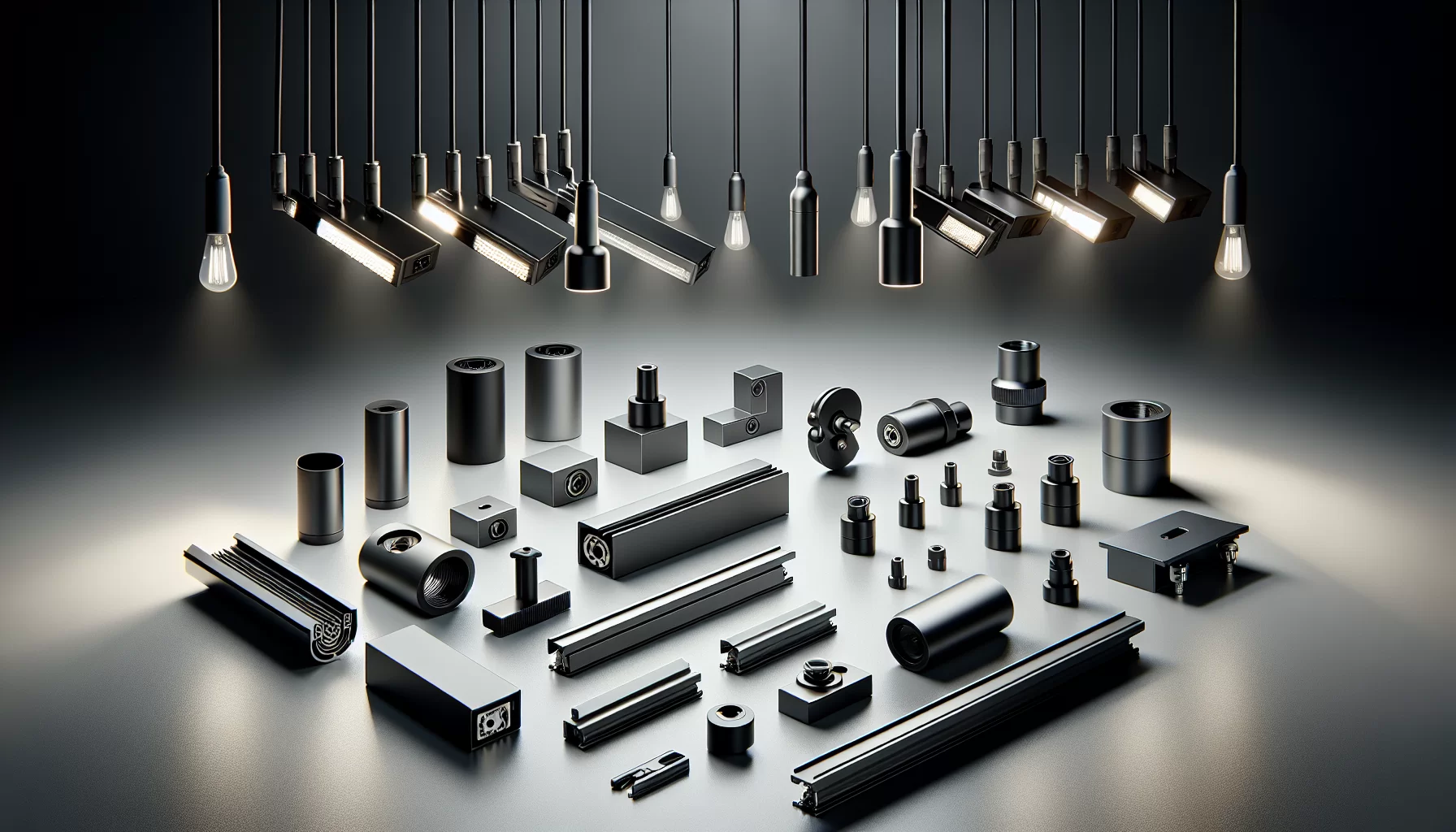If you’re a solar light wholesale vendor or light engineer, you are likely familiar with the working principle of solar lights. This article outlines why the highly sought-after all-in-one solar lights work differently despite using the same principle with solar lights. Let’s get to it!
All-in-one solar lights follow the same working principle as solar lights. Except that they feature modern technology, are made from better materials, have better features, and are more efficient. Features like lithium batteries, sophisticated controllers, a PIR or microwave human body detection module, high-efficiency solar panels, and LED lights to make the all-in-one solar lights stand out.
Unarguably, no one knows as much as manufacturers about these products, and at Besen, as producers of LED lights for the last 12 years, we have helped light engineers choose the best lights for their projects.
So that these can all make sense, let’s do a little refresher course about how solar lights, in general, work. They harness the sun’s energy and store it for on-demand supply. The parts are all connected; photovoltaic cells in the panel absorb the sun’s energy, store it in batteries, and make it available on demand. Put on solar light, and it illuminates the environment.
How do all-in-one solar lights work differently?
All-in-one solar lights are slightly different from solar lights. They feature small tweaks to the basic principle; for example, they have light sensors to regulate the on/off switch based on the temperature reading of the environment. These lights go off at sunrise and automatically come on as the sun sets.
An additional feature is the smart charge controller that automatically connects/disconnects the charger when the battery is low/full. Batteries are automatically disconnected from charging when they are full, and solar panels automatically draw light energy when batteries need to be charged. This means longer average shelf life for the batteries.
High-efficiency LED lights and solar panels are used in all-in-one solar lights. Talking about batteries, all-in-one solar lights use lithium batteries. These batteries have an average shelf life of eight freaking years. This makes them efficient, energy-saving, durable, and the best in the market.
You haven’t read it all! All-in-one solar lights allow a manager to determine the intensity of the lights to fit the environment’s needs based on project requirements. For example, you can set a dimmer control or customize your lights to fit the needs of the locals in the community. It improves the delivery of light engineers through the satisfaction of users derived from its features.
What makes all-in-one solar lights stand out?
The features! They have a uniqueness that would prove efficiency in your business, project, and skills. Still in doubt? Let’s run through some features of all-in-one solar lights in great detail.
- Auto power control: In the all-in-one, the solar light is an intelligent control system called a Maximum Power Point Tracking (MPPT) controller. It helps to improve the power conversion process by automatically altering the power output to suit the prevailing temperature/weather.
- The solar panel: The solar panel is an indispensable part of all-in-one solar lights. All-in-one solar lights feature improved circuitry and software with an enhanced solar module that can improve its conversion rate by up to 25%, making it more efficient.
- Battery: Some all-in-one lights have improved lithium batteries adaptable to the local weather/temperature. This enables all-in-one solar light to meet the demands of adverse weather and remain on for longer hours without sunshine.
- Rotating platform: Some all-in-one lights have a 360 degrees rotating platform (especially street lights). With this feature, you can seamlessly position your solar panel to face the sun for maximum harnessing.
- Remote Monitoring System (RMS) technology: For easy management and control of the lights wherever you are. This allows you to detect problems and apply quick solutions as need be.
- Microwave or PIR solar sensor: Senses human or animal movement around the light within a range set by the manufacturer. These sensors let the light dim or brighten up when people pass.
.
- Remote Control: It allows you to switch between light modes, monitor and keep lights easily, and schedule lighting profiling by just pressing buttons. Comfort!
- LED Module: An all-in-one solar light has an LED module as its primary light source. It is expected to be built with a full aluminum heat sink at the rear to improve airflow. The size and power of the LED may change on its own. LEDs like the 3528, 3030, 5050, and 5630 are available and suitable for various applications.
- Spread light lens plus a bat wing: A bat wing lighting system may also be included with the LED unit in its packaging. This successfully removes hot spots and spreads the LED’s light to provide illumination uniformity. Also, it aids in more excellent lighting and illumination.
- Durable die-casting aluminum for its housing: All-in-one solar lights come with a high-quality, CNC-made aluminum casing to support their high-performance potential. This increases component lifespan and enhances LED thermal heat dissipation by up to 115%.
Why do vendors and light engineers choose all-in-one solar lights?
The features of all-in-one solar lights are not the only reason wholesalers, project managers, and light engineers choose them. Asides from aesthetics and the fact that they are similar prices to the classic street light, other perks are:
Easy Shipping
All-in-one solar light offers several excellent benefits. One of its remarkable features is portability and lightness. This allows importers and exporters to convey it on oceans or cargo planes with relatively less stress and cost than the traditional split solar light with separate components.
Easy Installation
The all-in-one solar light can be easily managed, owing to its slim body and lightweight attachments. Installations are easy and seamless, with a typical installation time of 15 minutes or less for each unit.
Saves workers costs
Installing a solar street light may require little to no engineering experience. A group of artisans can easily install it. This helps save the cost of hiring for you as a supervisor engineer or project manager.
High Lighting Efficiency, Zero Energy Cost
Up to 200 lumens/watt of lighting output may be obtained from all-in-one solar LED lamps. You may save over 80% on electricity compared to conventional solar lights. Furthermore, since solar street lights are off-grid, there are no operating costs and no power bills.
No earthworks or trenching is required.
There is no requirement for installation’s usual trenching and earth-moving, especially in street lighting. With this, you can save a lot of time and money.
High-tech and economical maintenance
The solar street light, controlled by a solar charge controller, may change the amount of light it emits following ambient brightness and user demand. In remote areas, the maintenance cost for typical street lights is high. However, solar light requires less periodic examination; therefore, the maintenance cost is relatively modest.
Security and durability
Solar lights do not use alternating currents, so they are free from safety threats. All-in-one solar-like most solar modules on the market now have steady functioning for at least ten years. They are capable of producing power for up to 25 years.
How to choose the best all-in-one solar street light
All-in-one solar lights are great, but you could end up with an average or faulty one if you don’t know what to look out for. You can avoid this risk by buying from an experienced and trusted manufacturer.
Here are, however, some things to consider:
Type of Solar Panel
The panel you choose determines the performance and efficiency you will experience. Experts recommend choosing a monocrystalline silicon solar panel over the polycrystalline one. Monocrystalline silicon panels have a higher power conversion rate, especially in cold weather and regions. Furthermore, monocrystalline panel designs offer simplicity and compatibility, making them consume less space while producing excellent performance and aesthetics.
Battery Type
All-in-one solar lights use one of the best battery types (LiFePO4). This battery can last up to eight years. It’s portable and very efficient. The price of this battery is great compensation for its lifespan and quality. Any other battery type other than the LiFePO4 might not be a good choice.
Size
Before now, factories attempted bigger sizes of all-in-one solar lights. They found out that the product no longer looked like a street light, and it disturbed the aesthetics they sought to achieve. It was interesting to find out that people prefer simple and basic designs as opposed to large sizes.
Weather condition
Wholesale vendors in cold regions should choose all-in-one solar lights with strong photovoltaic cells to harness the slightest sun energy available. Light engineers should also choose all-in-one solar lights with high-temperature for warm environments.
Let’s skip to the good part…
How do we import all-in-one solar lights from China?
China is known for its tech-savvy industries. A number of the best manufacturers of all-in-one solar lights can be found in China. Luckily, you can import without glitches from China.
Wholesale vendors or light engineers will need a general license to import all-in-one solar lights from China. Follow the due process, and you’d secure your license. A special license is for restricted items like fish, cosmetics, pet food, etc.
In Conclusion
An all-in-one solar light is the future of outdoor lighting systems. It will save your company millions of dollars because they need zero maintenance or monitoring and are best suited for outdoor projects.
Compared to traditional street lights or solar lights, they have a motion sensor, smart technology, better performance, and satisfactory efficiency.





